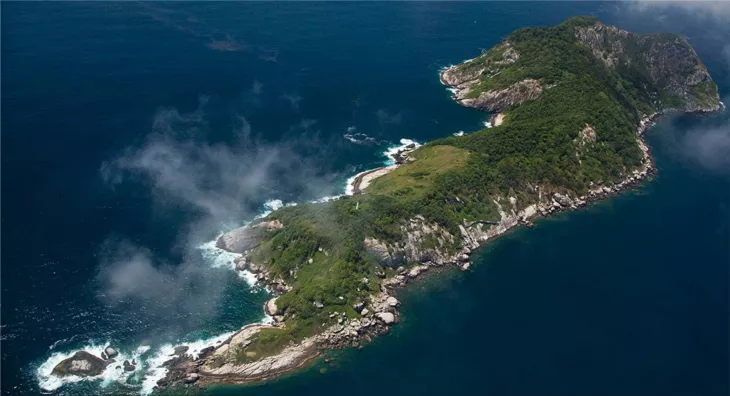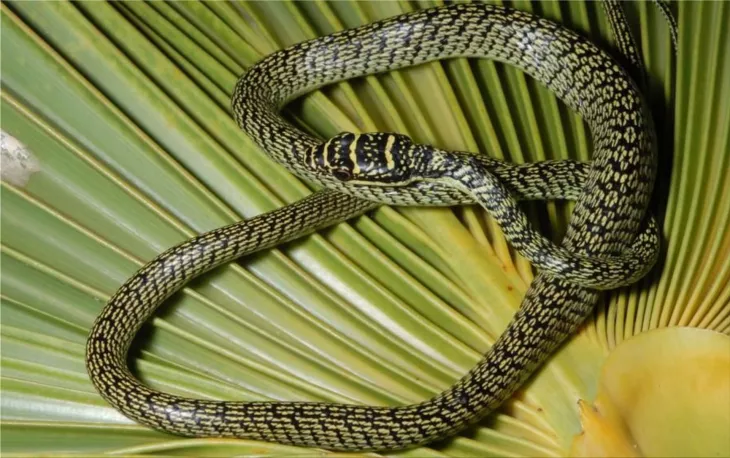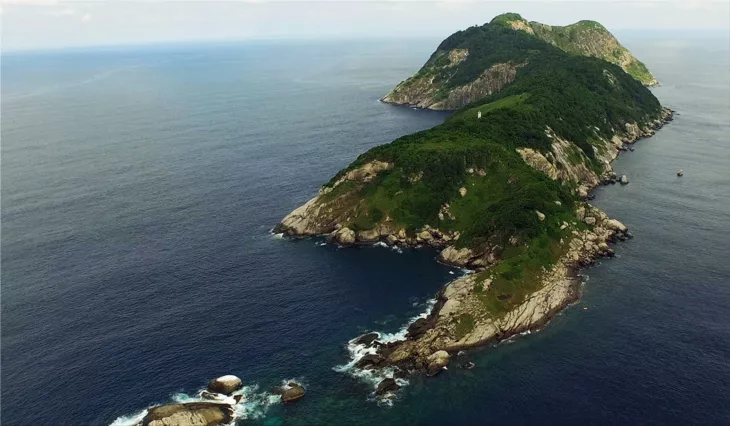Snake Island is one of those mysterious and exotic places that have given rise to countless tales and legends. Snake Island, or as it is also known "Ilha da Queimada Grande", is an island of 430 square kilometres, located off the coast of São Paulo, Brazil. Its importance lies in the fact that it is the only place in the world where the Bothrops insularis snake lives.
Despite being one of the most poisonous snakes in the world, scientists managed to obtain captopril from its venom to treat high blood pressure. Subsequent studies indicate that it has excellent potential to treat various types of cancer and increase longevity in humans.
Snake Island Characteristics
The Snake Island has geography shaped by cliffs and rock formations that can reach heights of 200 meters. It is irregular, and the beaches are conspicuous by their absence.
The main fauna is represented by various lizards, blue lobsters, arachnids, giant cockroaches, and different migratory birds. It is because of this hostile environment that Bothrops insularis has been forced to evolve.
This reptile has specialized in the predation of migratory birds, hence the qualities of its venom and its need for survival. Even so, it has been declared by UNESCO as a critically endangered species.
A natural laboratory about to disappear
The access of people to the island is prohibited, except when it comes to carrying out serious scientific research with a specific purpose. This level of security is in charge of the navy of this country.
Such measures are due to the fight for the conservation of the species that only inhabit this island, since the international trafficking of species represents a constant danger, not only for those who risk their lives capturing specimens of this species but for the same species that they run the risk of disappearing.
Added to this situation is the widely spread belief by some media that the island is plagued with snakes when in reality, the number of individuals of this species barely exceeds 2,000.
In addition, the presence of inbreeding has been detected; that is, of mating between related individuals. This can lead to genetic disorders in this species and bring it even closer to its total extinction. Due to the importance to the world of this natural serpentarium, the government issued a decree declaring it as a Relevant Area of Ecological Interest.
Although the Snake Island is only 33 kilometres from São Paulo, no human being lives there. The last human inhabitants to see the island of snakes were the lighthouse keeper and his family until the beginning of the 20th century. But since the lighthouse was automated, it no longer required an external person for its operation.
Legends of all kinds are woven into the place, and most of them have a common denominator: those who inhabited the island mysteriously disappeared. It is also said that the worst death awaits anyone who is bitten by a snake, as its venom is so corrosive that it turns meat into a disgusting liquid.
Likewise, it is believed that the island of snakes houses in its entrails a treasure hidden by pirates. These, to ensure that no one found him, at least in life, had decided to populate the island with murderous snakes.
All these absurd beliefs have led to a set of generalized distortions in those who listen to them. The truth is that the island constitutes a genetic bank of unique species on the planet, with a future that has shown promise in biology and medicine.
The real treasure of snake island
The Bothrops insularis snake is commonly known as the golden spearhead, and its venom is capable of killing an adult male in less than 60 minutes. This poison is composed of many toxins that directly affect the circulatory system and the nervous system of the victim.
This snake is perfectly camouflaged with its natural environment. Only in this way does it take the birds it feeds on by surprise. The Bothrops insularis is a snake about 60 centimetres in length and light brown.
In the remote past, around 11,000 years ago, the island of snakes was part of the continent. However, when the sea level rose, the island was flooded and no longer connected with the American continent.
This situation forced its residents to evolve based on their new reality. In the case of Bothrops insularis, it must have produced a much more effective poison since it could only be fed a few times a year on migratory birds. So he only had a few chances to survive.
















